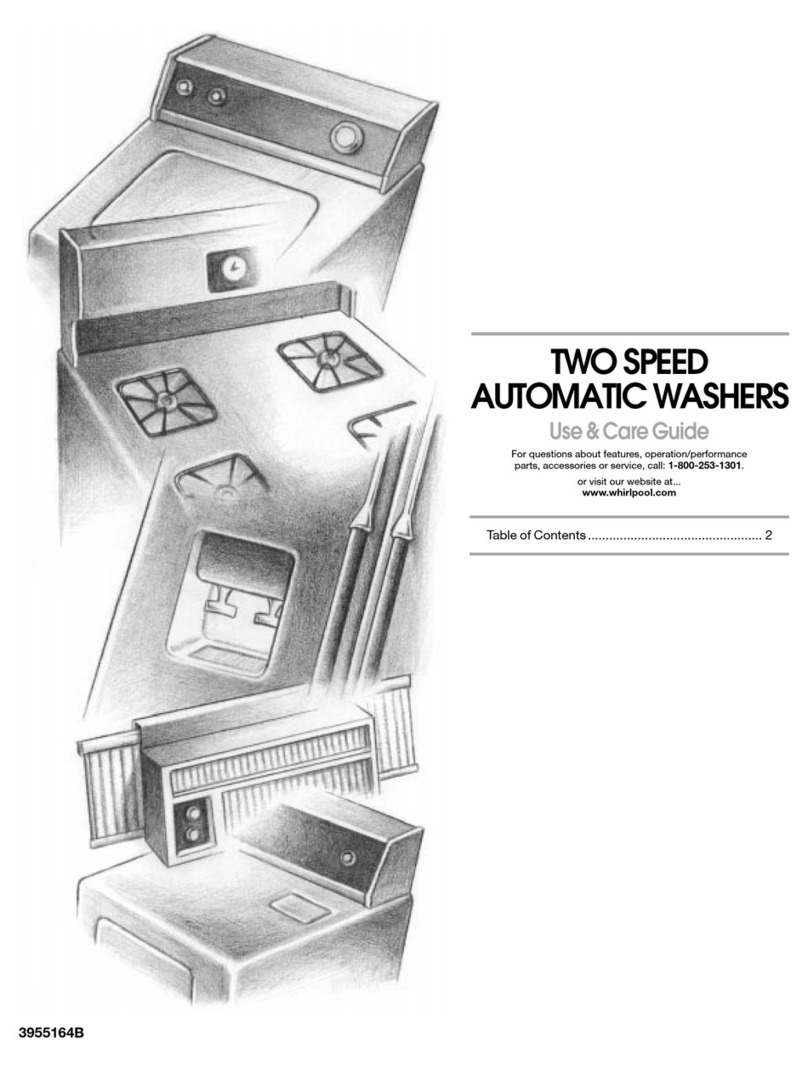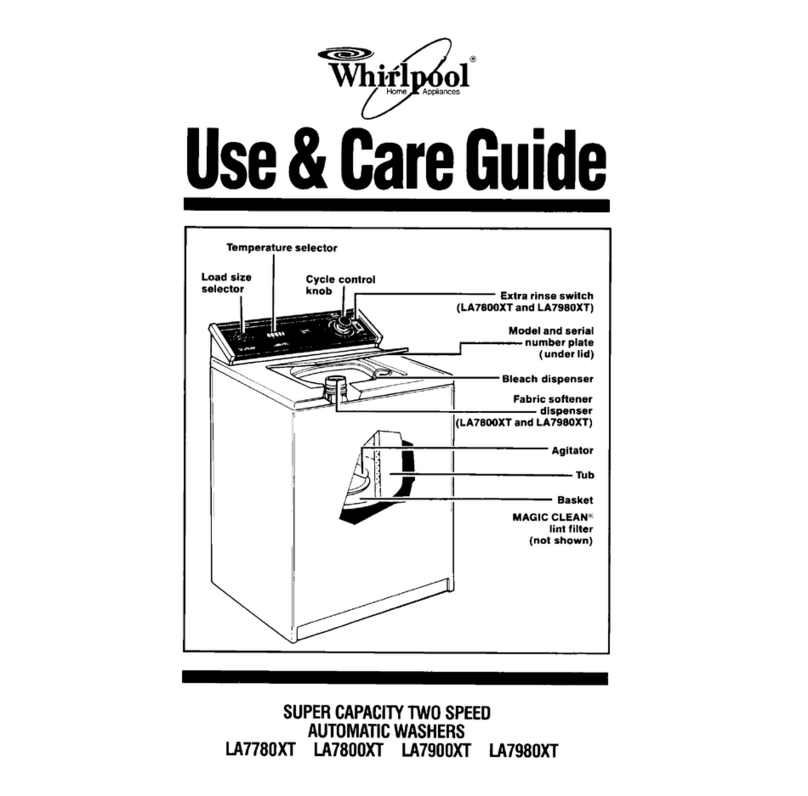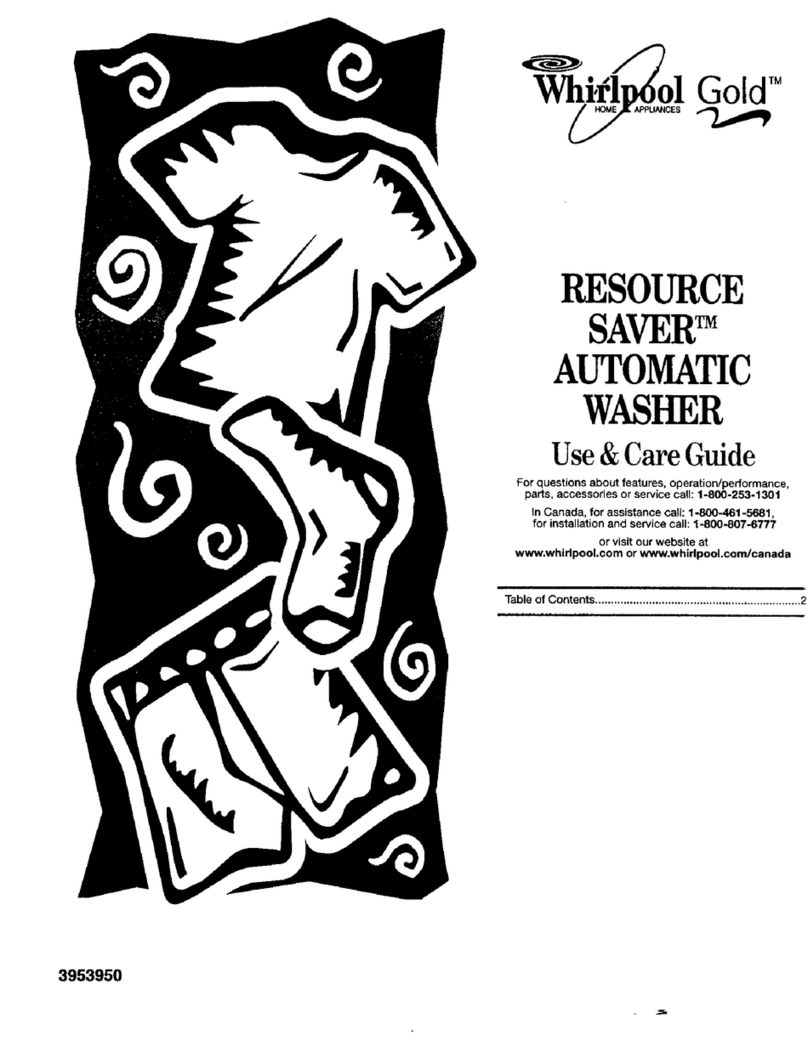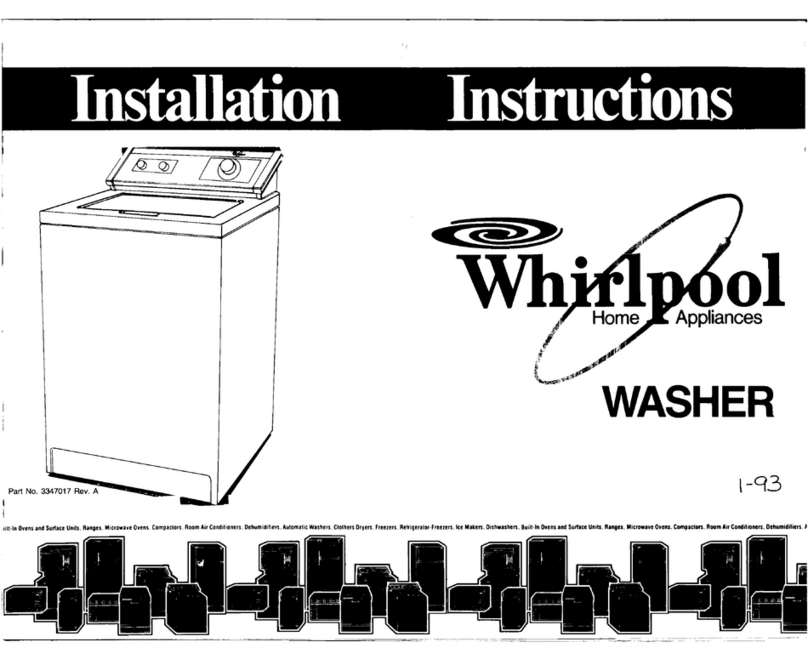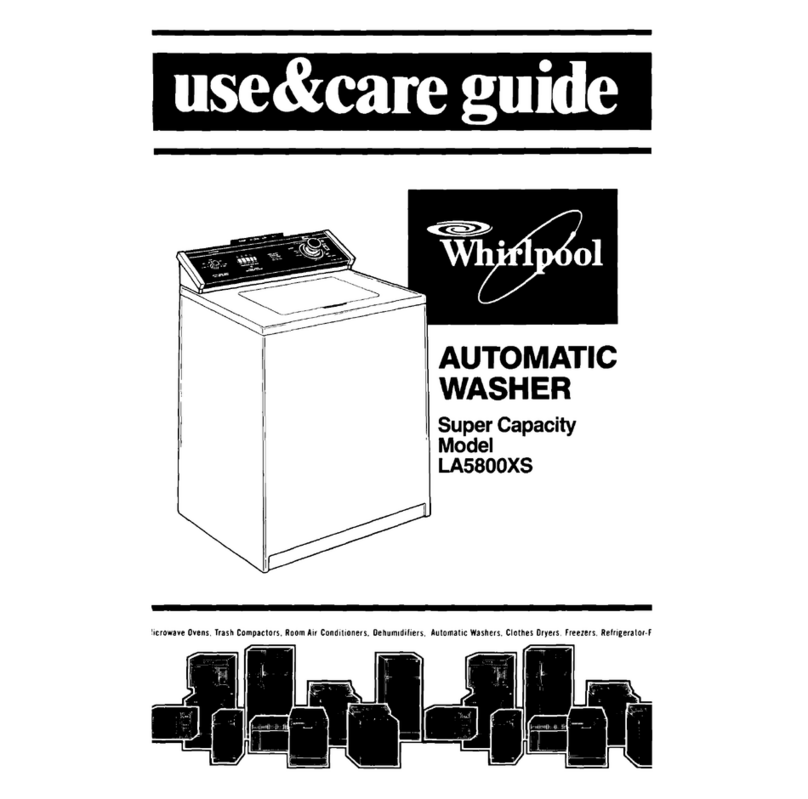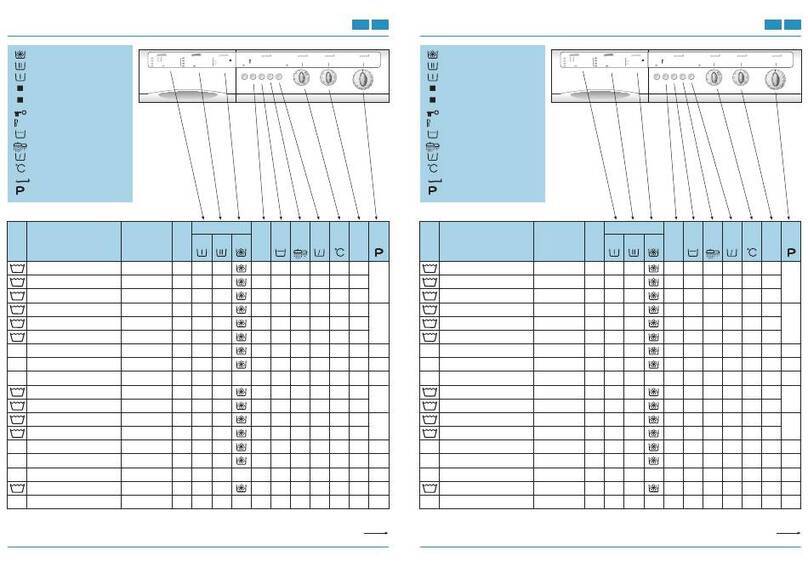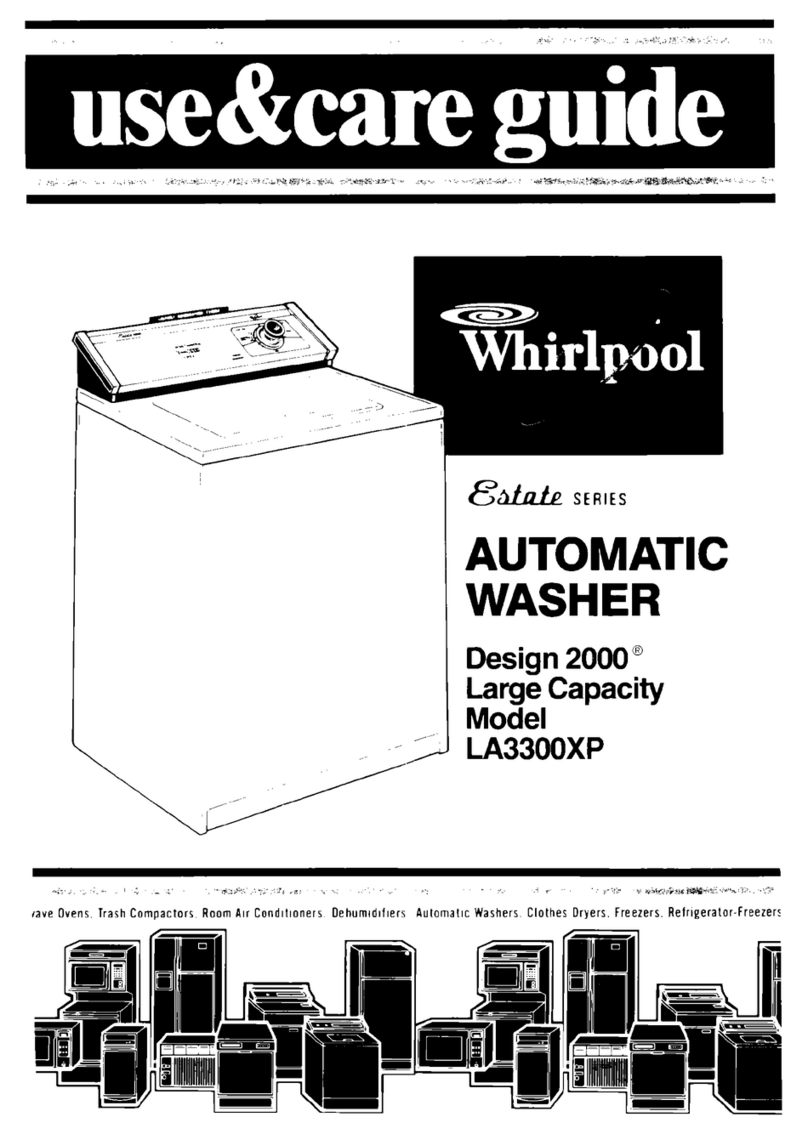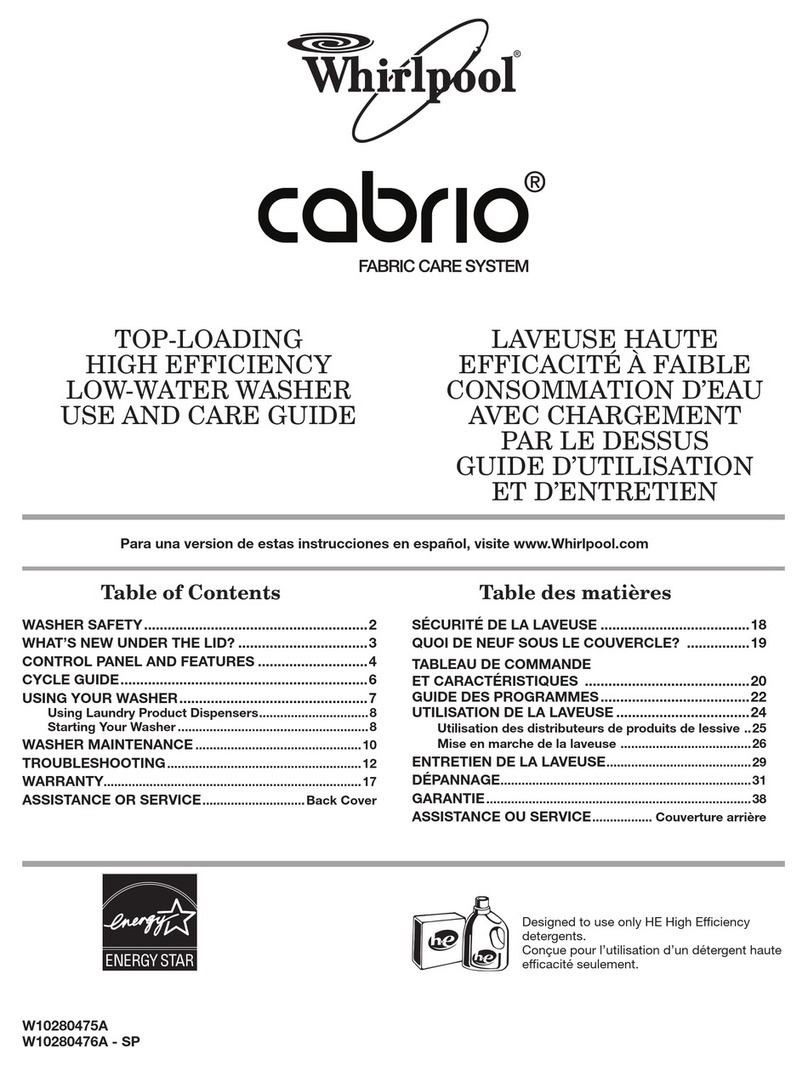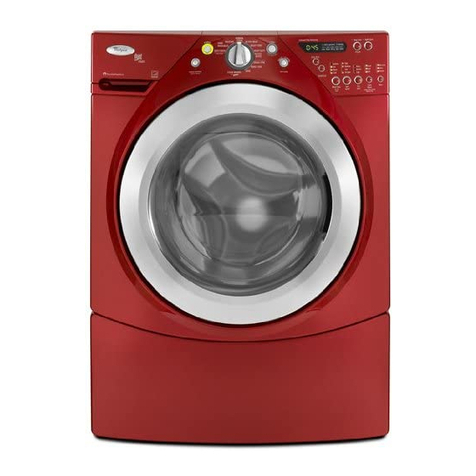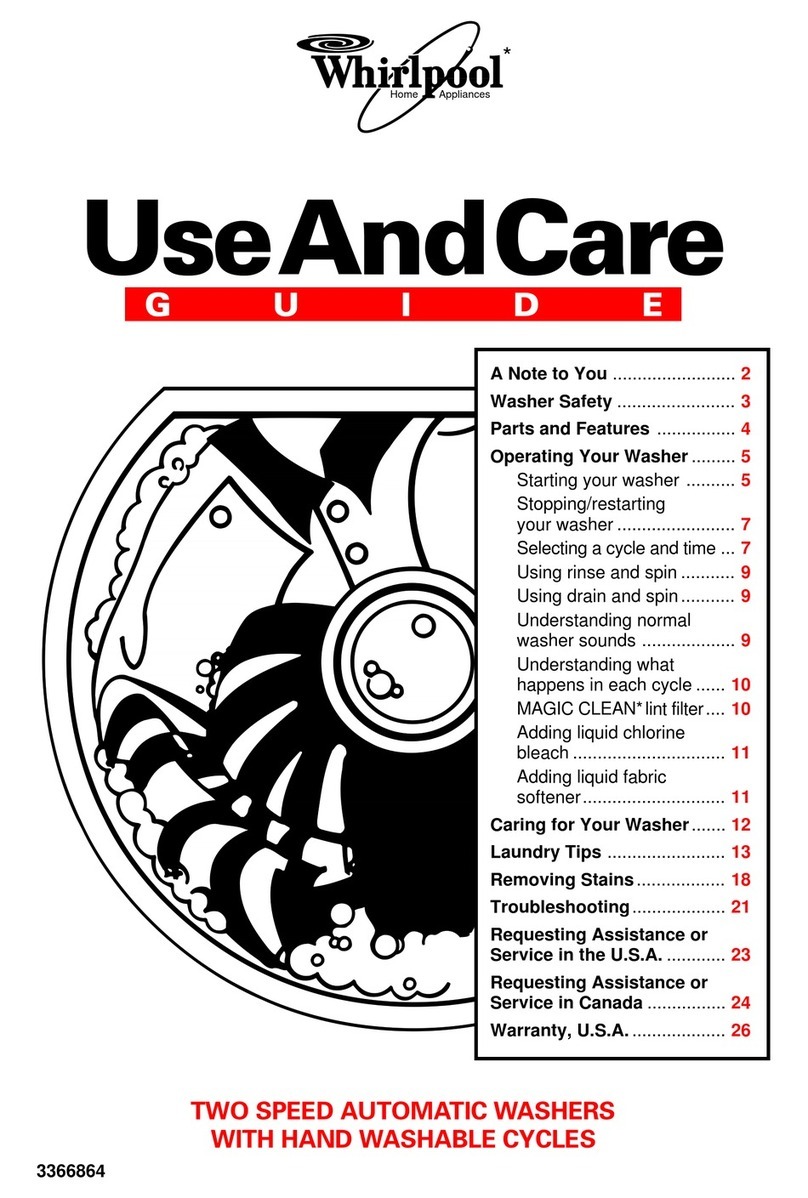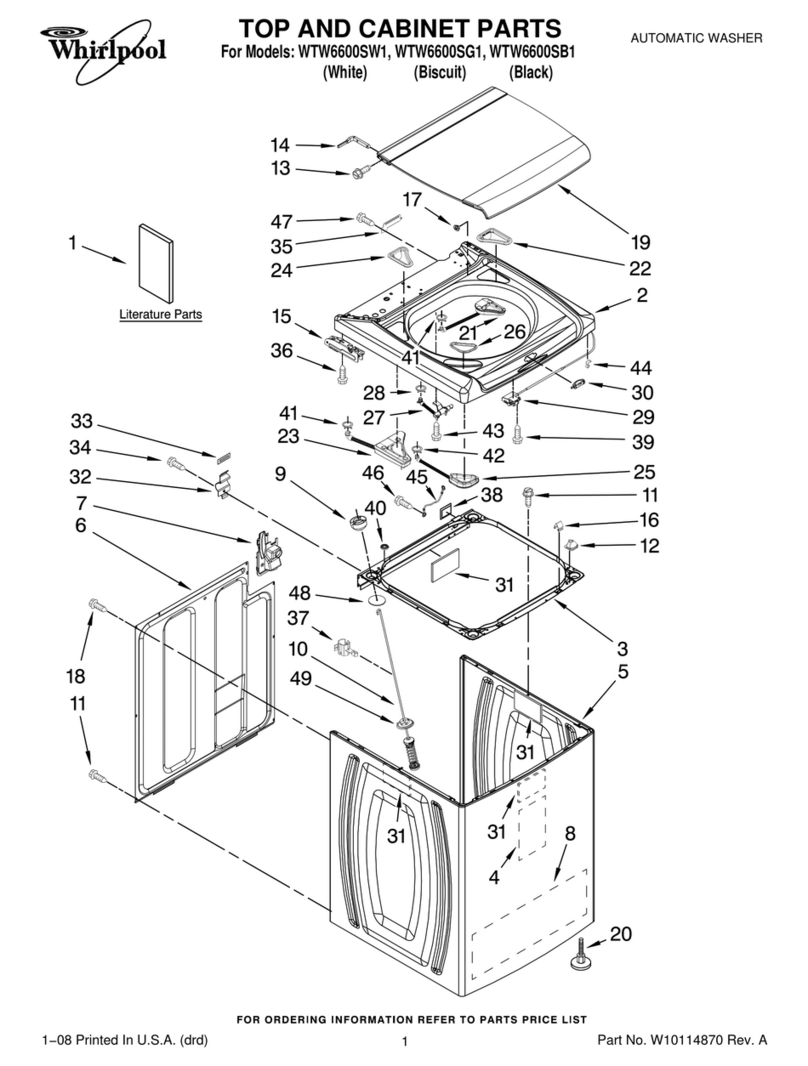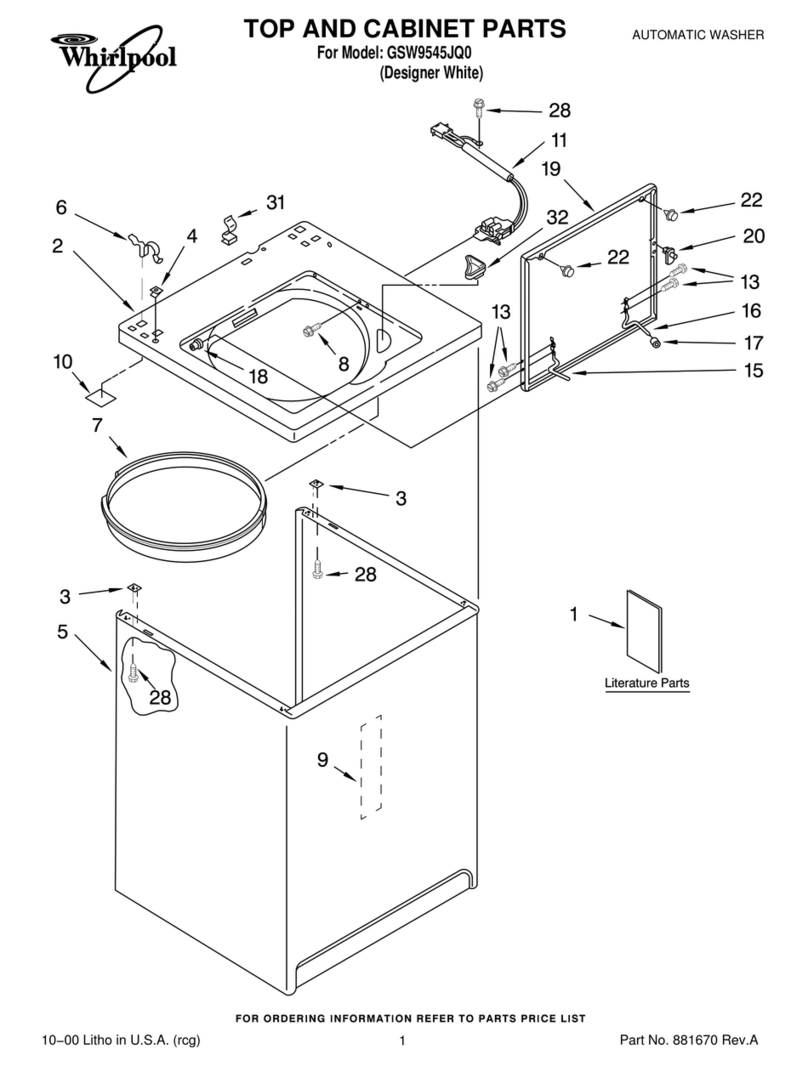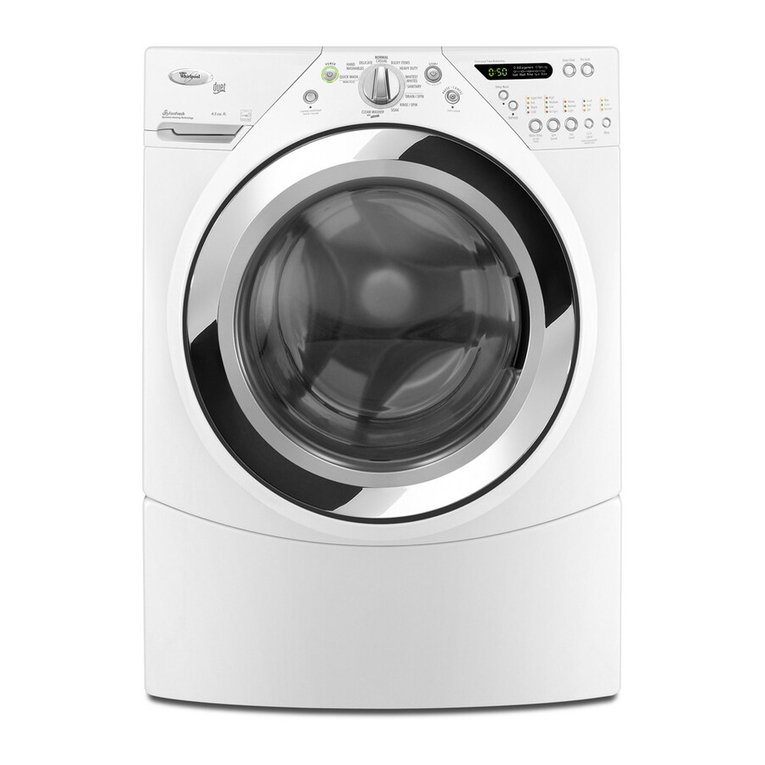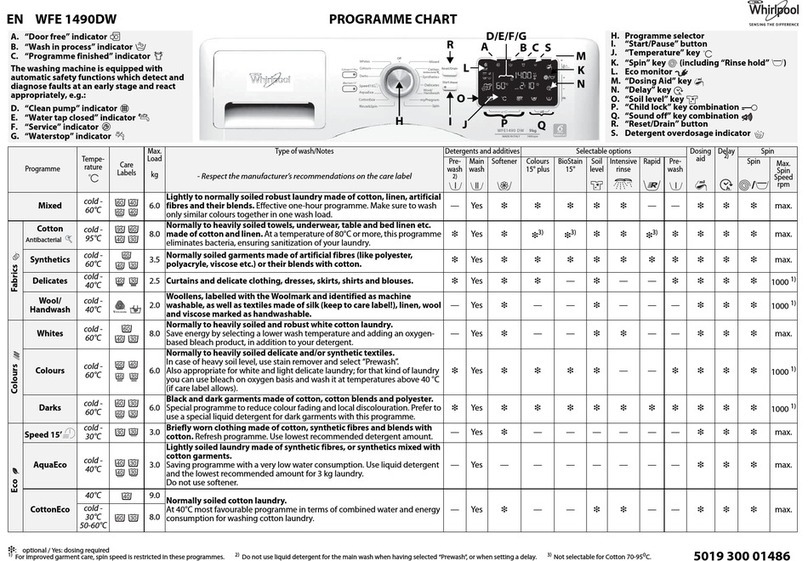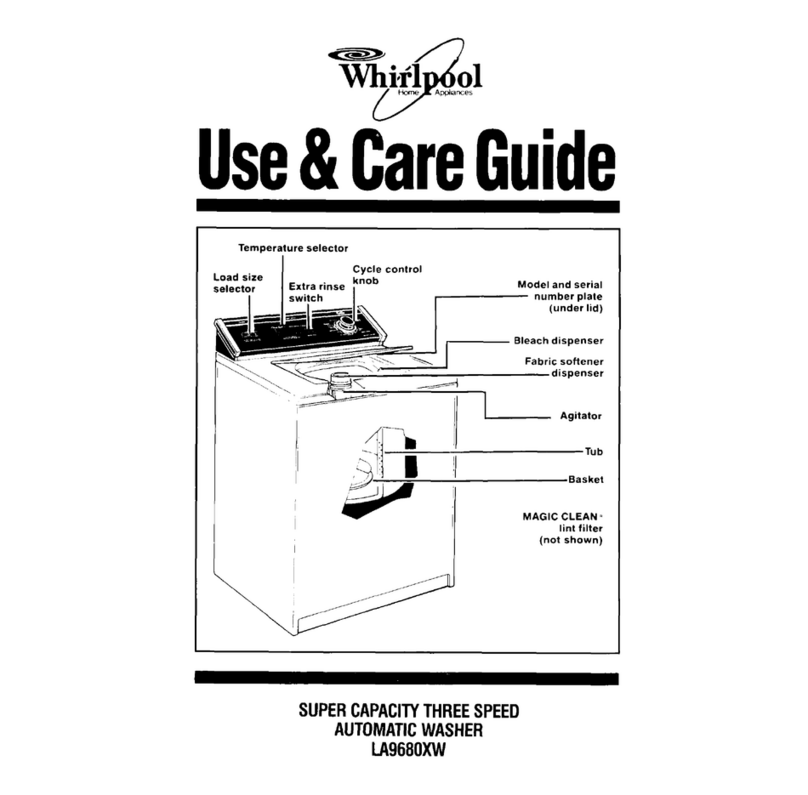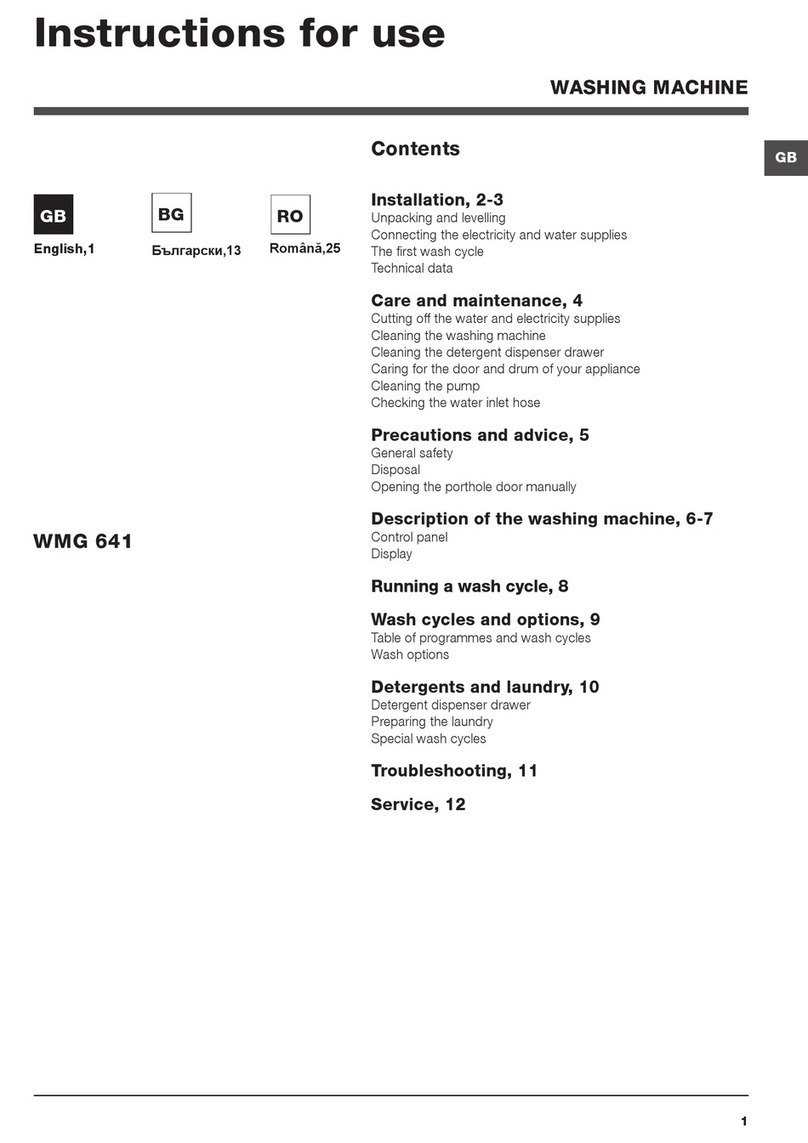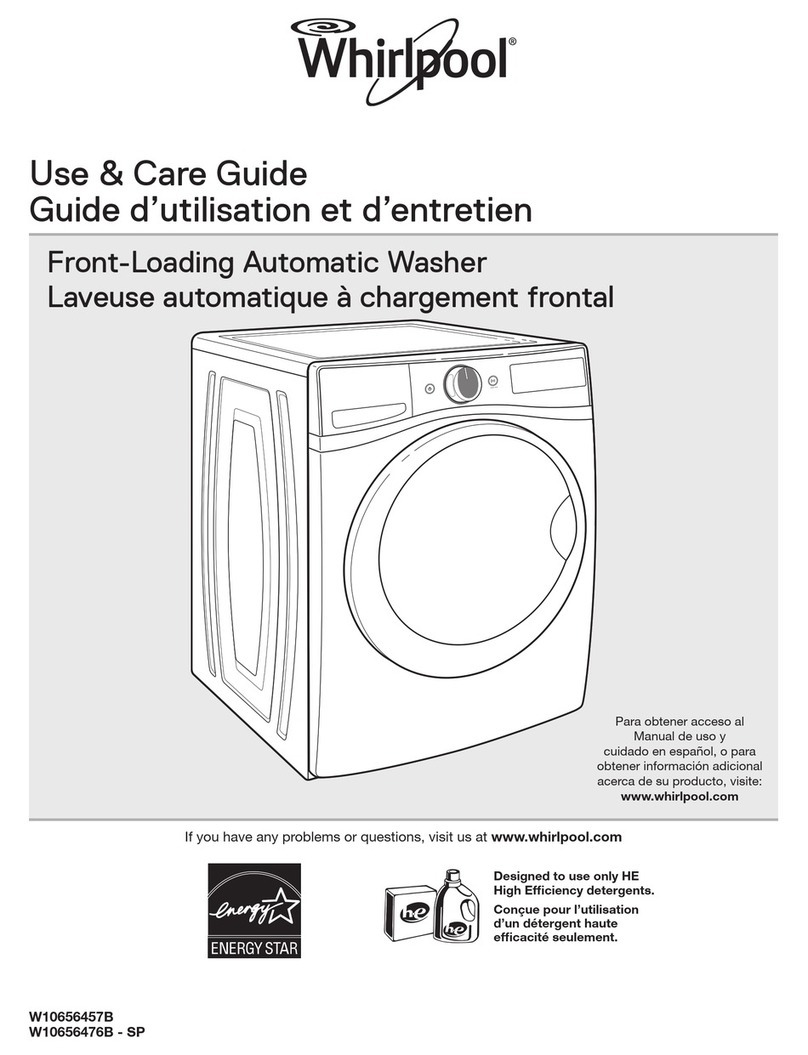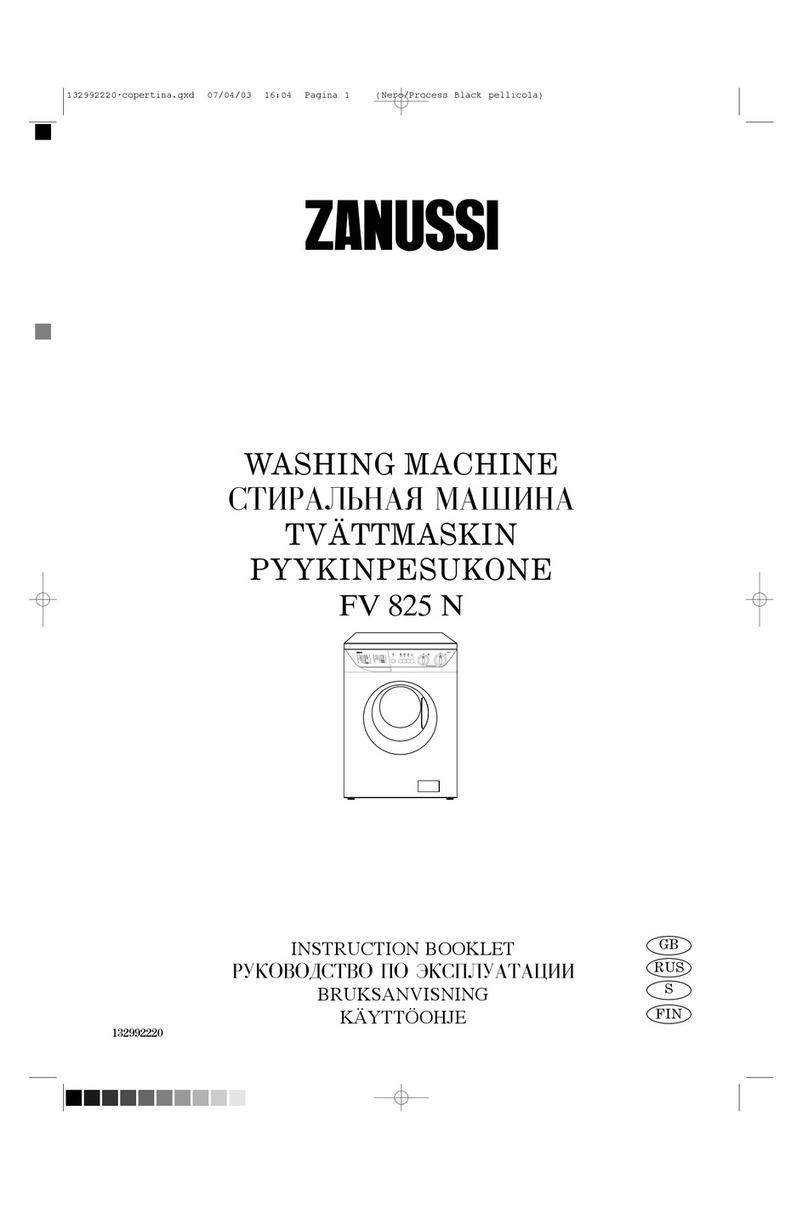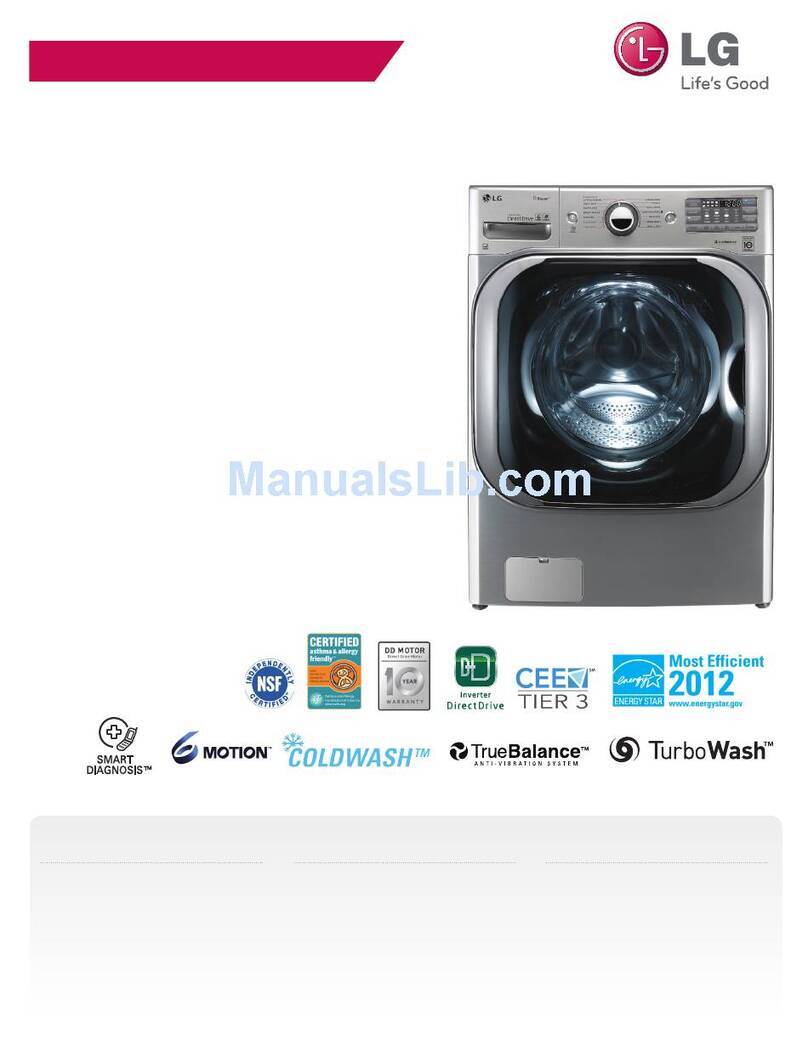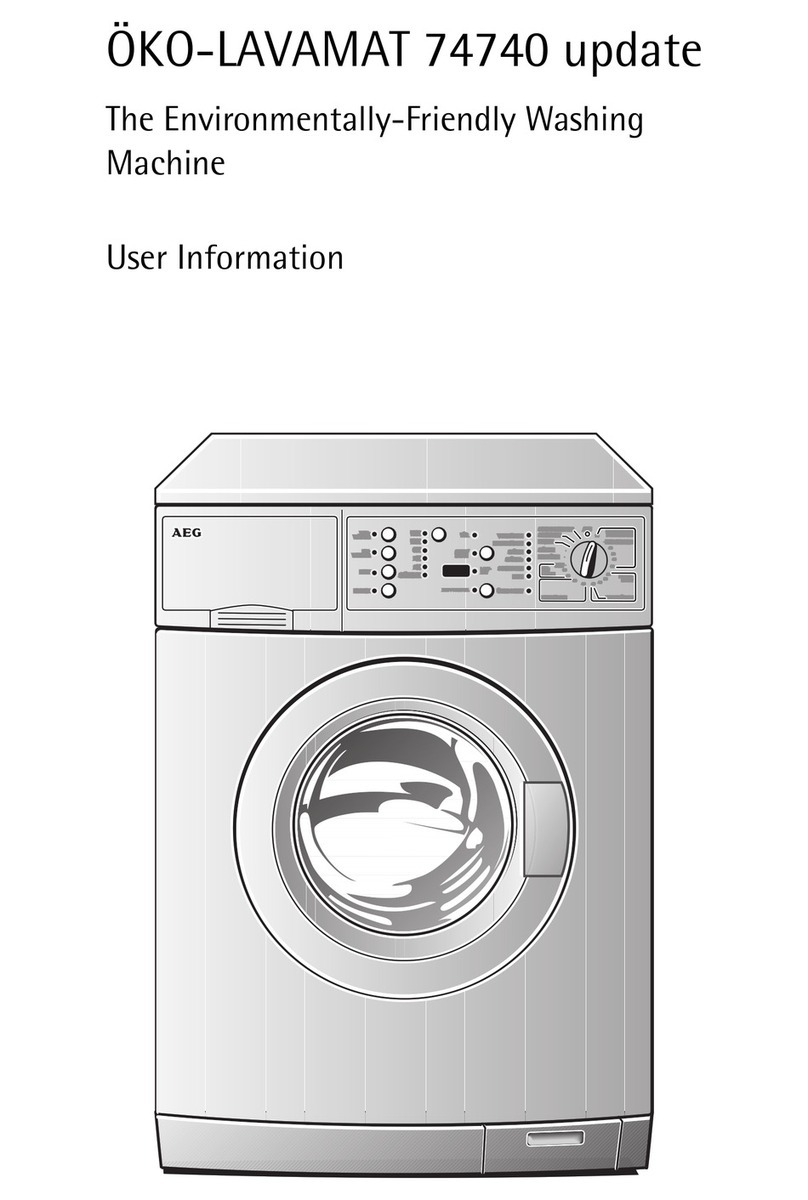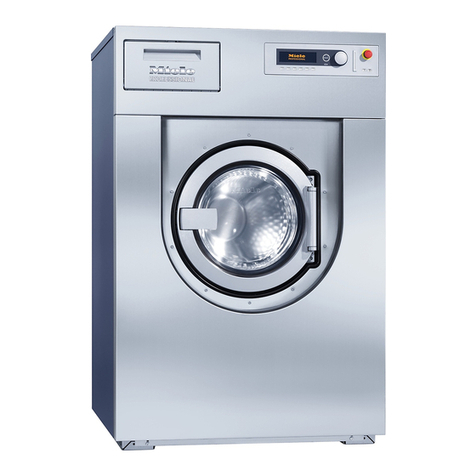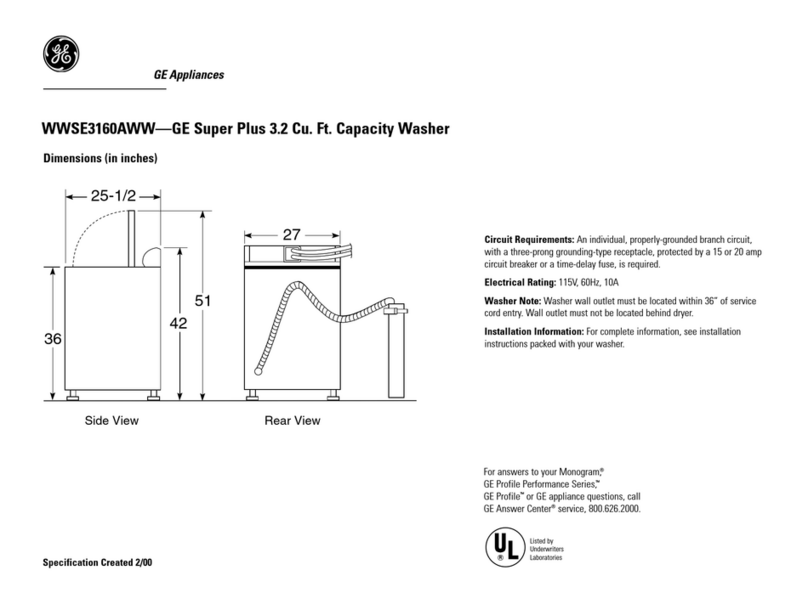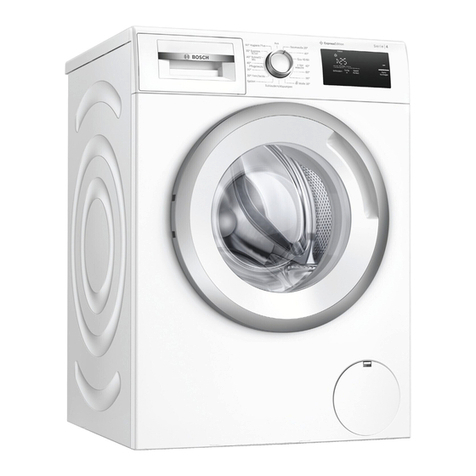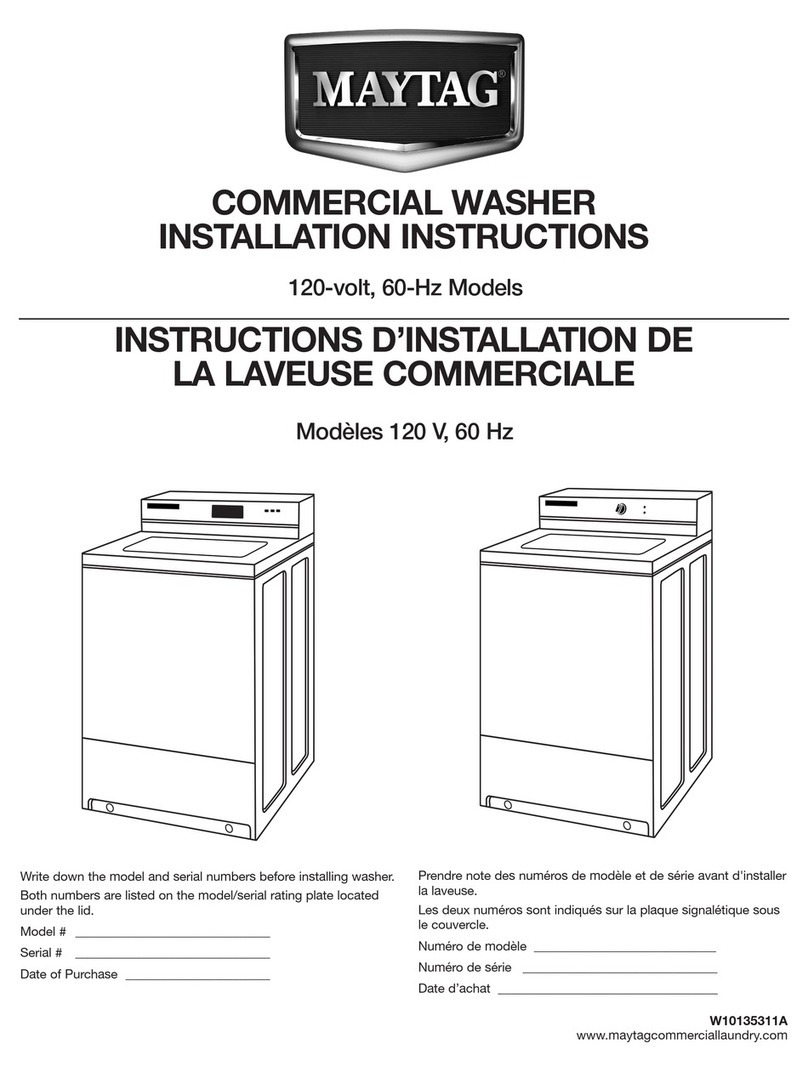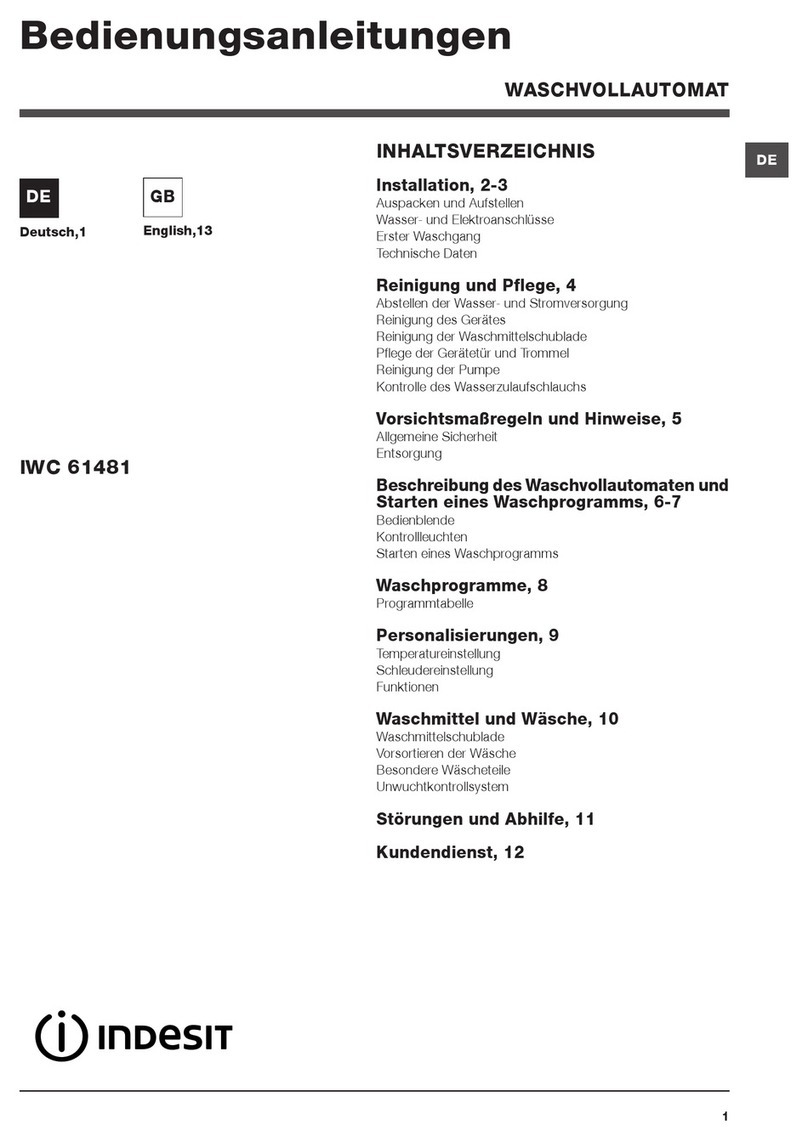IMPORTANT SAFETY INSTRUCTIONS
To reduce the risk of fire, elsctrkal shock or InJury to persons
when using your washer, follow basic precautions, Including the
l Read all instructions before using your
washer.
l Do not machine wash or machine dry
items cleaned, washed, soaked in, or
spotted with wax, paint, gasoline, oil, or
other flammable fluids. The fumes can
create a fire hazard or explosion. Always
hand wash and line dry items containing
these materials.
. Flammable fluids (dry-cleaning solvents,
kerosene, gasoline, etc.) should not be
used or stored in or near your washer. Do
not add flammable fluids to your wash
water. These substances give off vapors
that can create a fire hazard or explosion.
l Do not allow children to operate, play with,
or crawl on or inside your washer. Super-
vise children closely when your washer is
used near them.
. Before your washer is removed from
service or discarded, remove the lid to
prevent accidental entrapment.
l After starting a cycle, do not reach into the
basket unless the Cycle Control Knob is
pushed in and all motion stops.
l Do not tamper with the controls.
l If your hot water has not been used
recently (usually 2 weeks or longer),
hydrogen gases may build up in your
water heater and your hot water pipes.
HYDROGEN GAS IS EXPLOSIVE.
To
prevent injury or damage, before using
your washer, turn on all hot water faucets
and allow water to run for several min-
utes. This will allow gases to escape. Do
not smoke or use any open flame near
your faucet while it is open.
Please ...
l Have only a qualified repairman install,
repair, or replace parts on washer.
l Maintain washer properly.
* Protect washer from the weather and
keep it where the temperature will not fall
below freezing.
l Install and level washer on a floor that
can support the weight.’
l Connect washer to the correct 3-prong
outlet, electrical supply, water supply, and
drain.*
l Ground washer properly.*
*See the Installation Instructions.
Understanding your responsibilities
.Store detergent, laundry aids and other l Do not use chlorine bleach and ammonia
materials in a cool, dry place where
children cannot reach them (in a locked
cabinet if possible).
l Read and follow instructions on pack-
ages of detergent and laundry aids,
especially warnings and precautions.
l Do not wash or dry items that are soiled
with vegetable or cooking oil. These
items may contain some oil after laun-
dering. Due to the remaining oil, the
fabric may smoke or catch fire by itself.
or acids (such as vinegar or rust re-
mover) in the same wash. Hazardous
fumes can form.
* Unplug power supply cord before
attempting to service your washer.
l Do not machine wash fiberglass
materials. Small particles can stick to the
fabrics washed in following loads and
cause skin irritation.
- SAVE THESE INSTRUCTIONS -



